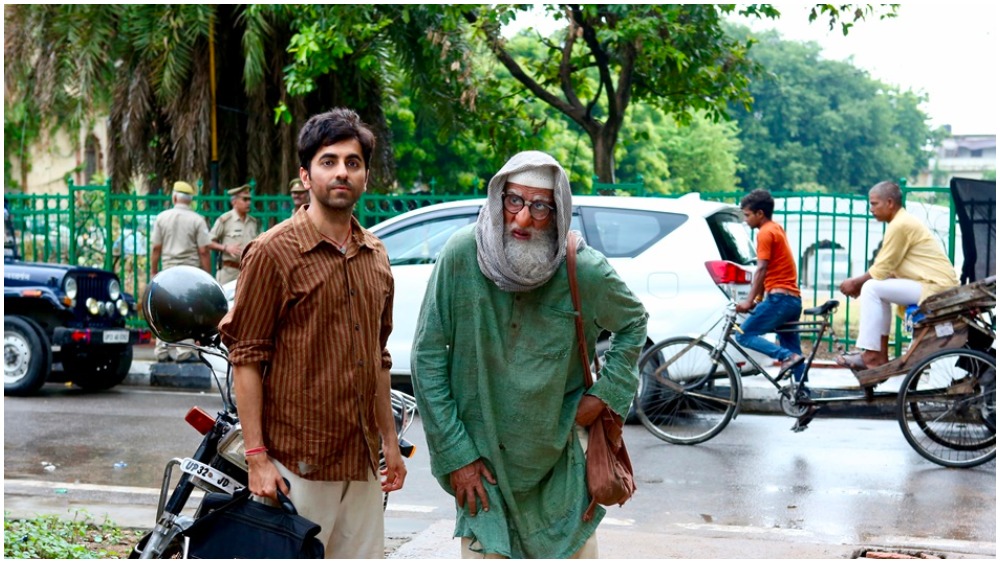Bollywood Is Shaken By Coronavirus & OTT, But New Normal May Look Much Like The Past
By Naman Ramachandran
LOS ANGELES (Variety.com) – Indian cinemas are shuttered, production continues to be at a standstill and the country remains in lockdown until at least May 31 due to the ongoing coronavirus pandemic. Unsurprisingly, consumption of television and streaming services has surged during this period. But digital may not be an existential threat to the film business.
India remains the most prolific film-producing country in the world, with an insatiable appetite for cinema, Hindi-language Bollywood, and regional. The 2018-19 financial year alone saw 2,446 films in 49 languages certified in the country.
According to the Ernst & Young annual report on India’s media and entertainment sector, theatrical business for 2019 was valued at $2.5 billion, making it fourth in the overall pecking order behind television’s $10.4 billion, print’s $3.9 billion and digital’s $2.9 billion. Cinema screen numbers have shrunk over the years to 9,600 for a population of 1.3 billion, and producers of several films, led by comedy “Gulabo Sitabo,” starring A-listers Amitabh Bachchan and Ayushmann Khurrana, have decided to bow directly on Amazon Prime Video while cinemas are closed. But key industry figures see the current mini-migration to OTT as temporary.
“We have always maintained that theaters play an important role in film distribution and we aren’t looking to change that,” Vijay Subramaniam, director and head of content for Amazon Prime Video India, tells Variety. “Early windows have always existed and will continue to advance, and so will the community experience.”
“These unique circumstances shine a light on the evolution of entertainment consumption and things are not going to be as binary as some may expect it to be,” adds Subramaniam.
Shobu Yarlagadda produced 2017’s “Baahubali 2: The Conclusion,” the all-time Indian domestic box office champion. “I think producers choosing to go directly to OTT is more short-term in nature,” Yarlagadda tells Variety.
“As they have already produced films and don’t see theaters opening or people coming to theaters immediately, producers of small to medium-budget films are compelled to go directly to digital to cut losses and ease cash flows,” says Yarlagadda. “Big-budget films will mostly hold on till they see people coming back to theaters as revenues from OTT and non-theatrical alone can’t cover budgets.”
There are plenty of big-budget films awaiting theatrical release. These include: cop-action film “Sooryavanshi,” starring Akshay Kumar, Ranveer Singh, Katrina Kaif and Ajay Devgn; sports drama “83,” starring Singh and Deepika Padukone; action-thriller “Master,” starring Vijay and Vijay Sethupathy; and historical epic “Marakkar: Lion of the Arabian Sea,” starring Mohanlal.
“Undoubtedly, the current situation emerging out of the pandemic is unparalleled, but we have complete faith that the same age-old passion of the movie lovers will make them come out in huge numbers and throng cinemas,” Alok Tandon, CEO of India’s second largest multiplex chain, Inox Leisure, tells Variety.
Girish Menon, partner and leader for media and entertainment at KPMG India, is reluctant to put a number to the sector’s financial losses, as lockdown is ongoing. KPMG’s 2019 industry report had predicted that India would have a billion digital users by 2030, but Menon now estimates that digital usage will accelerate rapidly.
He, too, believes in a healthy future for the theatrical business. “In the long term, theatrical releases are likely to remain a critical element of the value chain given the strength of the large screen viewing experience, strong share of theatrical revenues and related upside potential, mass appeal and preferences of artists for wider distribution,” says Menon. “However, there could be a narrowing of the theatrical window due to uncertainty over countrywide normalcy at cinema screens.”
Vikram Malhotra, producer of biopic “Shakuntala Devi: Human Computer,” starring Vidya Balan, took the difficult decision to sell the film to Amazon, while cinemas remain shut. “These are films that have been conceived, greenlit, written, shot and produced for releasing in cinemas,” says Malhotra.
“However, there are business exigencies — a film is not just a director and a producer and an actor, a film is more than 150 people who actively work as part of the team to put together a product where livelihoods, identities, expectations, kitchens, depend on — forget the outcome — the (distribution) of the film,” says Malhotra.
Malhotra’s upcoming films, horror-thriller “Durgavati,” awaiting post, and satire “Sherni,” whose shoot was halted by the lockdown, will both head to cinemas after the pandemic.
The pandemic has affected the livelihoods of thousands of daily-wage earners, and, led by the Producers Guild of India, the entertainment industry has rallied together to provide cash and in-kind support to film workers.
“The industry’s been very generous; the entire fraternity has come out in support,” says Guild president Siddharth Roy Kapur. “We’re glad that these funds are finding their way into the hands of those who are the most in need.” Donors include Netflix and Sony Pictures Networks India.
Meanwhile, Hollywood’s growth at the Indian box office is expected to continue apace post-pandemic. The number of releases rose from 98 in 2018 to 108 in 2019, and gross revenues increased 33% to $211 million, including $56.8 million for “Avengers: Endgame,” making it the highest Hollywood grosser of all time in India. “It is important for us to compete with Hollywood and to make movies that draw audiences towards films that we make here rather than indulging in protectionism,” says Roy Kapur.
As of May 21, India has had 112,000 confirmed coronavirus cases, with 3,435 deaths, according to official figures from the Ministry of Health. The southern state of Kerala has had the most effective response to the pandemic, and post-production is now permitted there for groups of five or fewer, maintaining social distancing.

